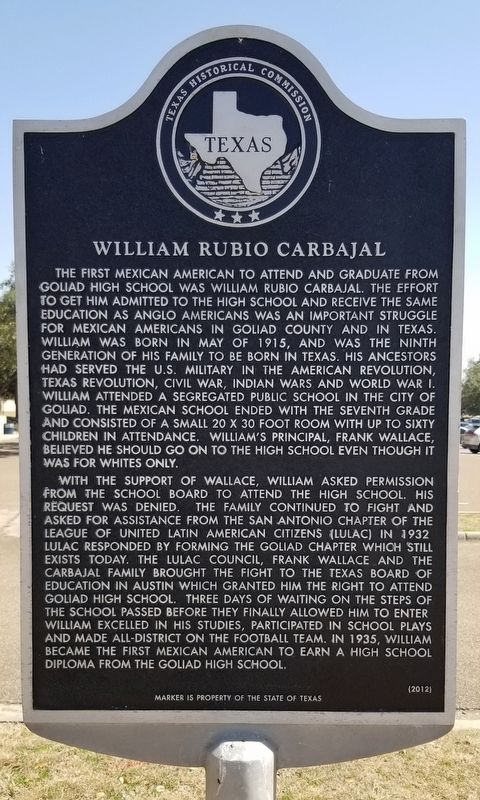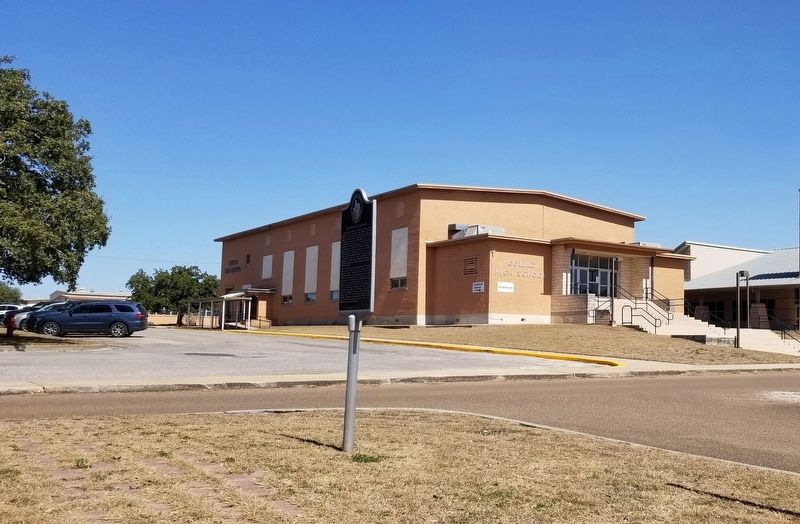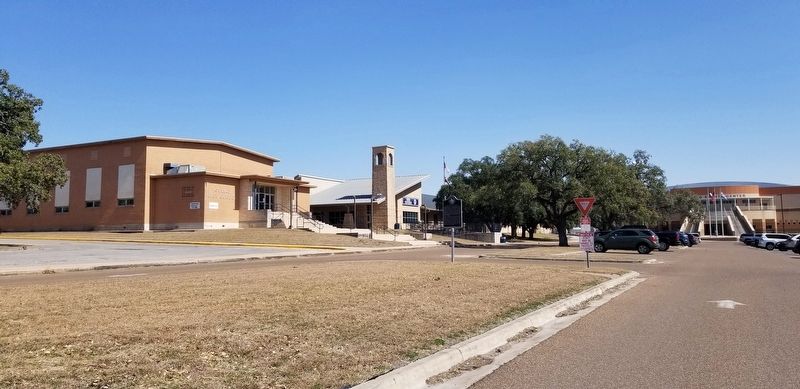Goliad in Goliad County, Texas — The American South (West South Central)
William Rubio Carbajal
With the support of Wallace, William asked permission from the school board to attend the high school. His request was denied. The family continued to fight and asked for assistance from the San Antonio Chapter of the League of United Latin American citizens (LULAC). In 1932 LULAC responded by forming the Goliad Chapter which still exists today. The LULAC Council, Frank Wallace and the Carbajal family brought the fight to the Texas Board of Education in Austin which granted him the right to attend Goliad High School. Three days of waiting on the steps of the school passed before they finally allowed him to enter. William excelled in his studies, participated in school plays and made all-district on the football team. In 1935, William became the first Mexican American to earn a high school diploma from the Goliad High School.
Erected 2012 by Texas Historical Commission. (Marker Number 17201.)
Topics. This historical marker is listed in these topic lists: Civil Rights • Education • Hispanic Americans. A significant historical month for this entry is May 1915.
Location. 28° 40.586′ N, 97° 23.68′ W. Marker is in Goliad, Texas, in Goliad County. Marker is on North Church Street, 0.2 miles south of West Ward Street, on the right when traveling north. The marker is located at the front entrance to the Goliad Event Center near the parking lot. Touch for map. Marker is at or near this postal address: 749 North Church Street, Goliad TX 77963, United States of America. Touch for directions.
Other nearby markers. At least 8 other markers are within walking distance of this marker. Oak Hill Cemetery (approx. 0.3 miles away); Mount Moriah Baptist Church (approx. 0.4 miles away); First United Methodist Church of Goliad (approx. 0.6 miles away); St. Stephen's Episcopal Church (approx. 0.6 miles away); Judge Pryor Lea Home (approx. 0.7 miles away); Goliad
(approx. 0.7 miles away); J. W. Fannin (approx. 0.7 miles away); Goliad Lodge No. 94 A.F. & A.M. (approx. 0.7 miles away). Touch for a list and map of all markers in Goliad.
Also see . . . Segregation.
Anglo-Americans began extending segregation to Mexican Americans after the Texas Revolution as a social custom. Tejanos formed a suspect class during and after the revolution, and that fact led to a general aversion of them. After the Civil War, segregation developed as a method of group control. For both minority groups, segregation existed in schools, churches, residential districts, and most public places such as restaurants, theaters, and barber shops. Source: The Handbook of Texas(Submitted on February 18, 2022, by James Hulse of Medina, Texas.)
Credits. This page was last revised on February 18, 2022. It was originally submitted on February 18, 2022, by James Hulse of Medina, Texas. This page has been viewed 399 times since then and 93 times this year. Photos: 1, 2, 3. submitted on February 18, 2022, by James Hulse of Medina, Texas.


